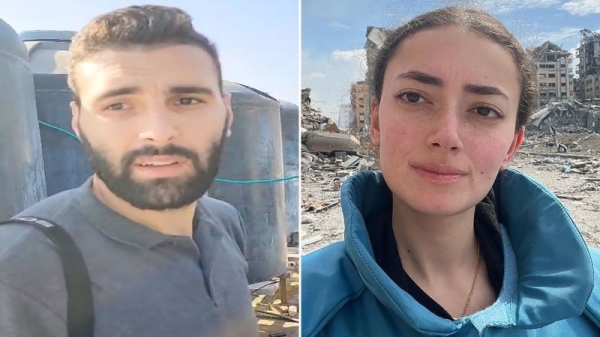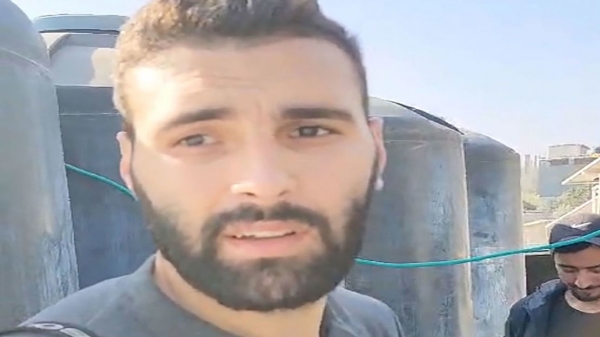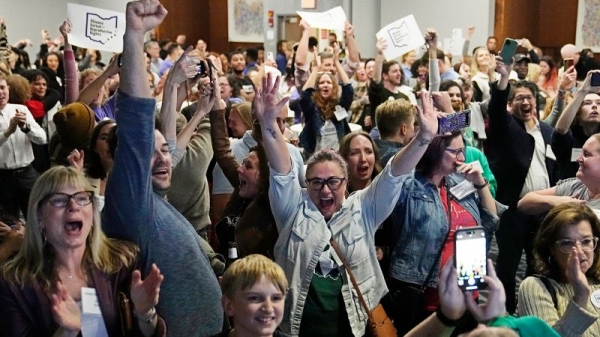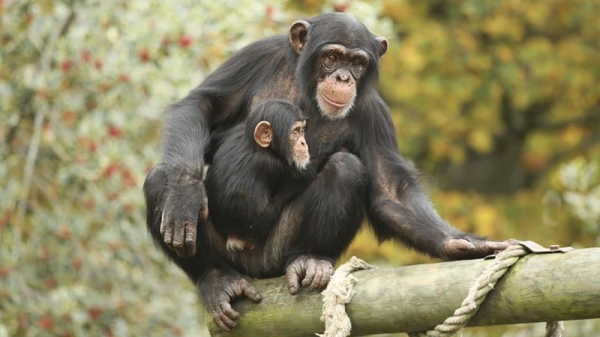
(CNN) — Early on Christmas Day in the central Gazan city of Deir al-Balah, Motaz Azaiza shared a terrifying update on X.
A quadcopter was flying low above the door of his house, he said, and he feared he was about to be targeted in an Israeli airstrike. As a highly visible Palestinian online who had received threats before, Azaiza believed he had reason to be afraid.
Hundreds of people flooded the replies with concern for the 24-year-old Palestinian photojournalist, who has been documenting Israel’s military assault on Gaza on social media since Hamas’ attack on Israel on October 7.
“I’m so scared for Motaz,” the replies read.
“I hope Motaz is okay.”
“Pray for Motaz.”
Noor, a medical student in California who asked to go by her first name for safety reasons, was one of the people worrying. For months, she’s been following Azaiza’s dispatches from Gaza, broadcast to his millions of followers: images of his once vibrant neighborhood transformed into a gray wasteland, raw glimpses of carnage in the ashes, and reflections on his own feelings of rage and exhaustion.
Noor refers to Azaiza with the familiarity of his first name. She gets notifications on her phone each time he posts, and worries when too much time passes.
“For so many of us, it almost feels like he’s a brother. He’s a friend, and we’re seeing him suffer in real time,” she told CNN.
Noor isn’t Palestinian and has never been to Gaza. What’s happening there still hits close to home. Her family is Iraqi, and she grew up against the backdrop of the Iraq War. When Azaiza said he feared being killed for his work, Noor found herself feeling scared and anxious for a virtual stranger halfway around the world.
“Their journalism isn’t just journalism. It’s a diary,” Noor said of the Gazans posting on social media. “They’re showing us their lives. They’re telling us, ‘Hey, I couldn’t shower for a week.’ ‘Hey, I barely had some of this to eat today.’”

Motaz Azaiza, a 24-year-old photojournalist who has been documenting the war on social media, now has millions of Instagram followers.
CNN
After hours with no information following that fear of an airstrike, Azaiza finally posted again. A targeted attack on his house hadn’t materialized, but there was bad news elsewhere: a refugee camp was hit in an Israeli attack.
Still, his posts signaled he was alive, and Noor could breathe a sad sigh of relief.
Palestinians on social media are a window into the war
Like millions of others around the world, Noor is witnessing the war in Gaza through the eyes of Palestinians who are sharing their daily realities on social media. Through their posts on Instagram, X and other platforms, these citizen journalists are putting a face to the conflict.
In return, their followers are developing strong emotional connections with them.
Leyla Hamed, a sports journalist in London, said the first thing she does when she wakes up is open Instagram to visit the profiles of Palestinians she follows and watch their stories one by one. As a journalist herself, she sees them as colleagues and feels a responsibility to bear witness.
“I feel so much empathy for them that I sometimes feel scared to open their profiles, just thinking something bad has happened to them,” she said.
Kanwal Ahmed, a filmmaker and storyteller in Toronto, has a similar routine.
“They’ve become family to the entire world,” she said. “If (creator Bisan Owda) hasn’t posted for 12 hours, there are hundreds of tweets: ‘Where’s Bisan?’ ‘Does anybody know where Bisan is?’ ‘Is she okay?’ If (Azaiza) has posted a picture where you can tell that he’s looking extremely depressed or he’s lost weight, there’s people discussing that.”
These images and accounts from Palestinians offer an instantaneous view that some young people feel like they haven’t gotten from traditional media outlets, Ahmed said. Young Palestinians like Azaiza, content creator Bisan Owda and freelance journalist Hind Khoudary haven’t just been on the ground since the beginning. They are reporting from their homes and their communities, often persisting through extended communications blackouts like the current one that began January 12.
They’ve become family to the entire world.
Kanwal Ahmed, filmmaker
Through raw, selfie-style videos chronicling the ever-present threat of explosions or the everyday indignities of displacement, they’re giving outsiders an intimate look at the human costs of war from the perspective of people who live there. Many of the images they share are so graphic that Instagram obscures them with “sensitive content” warnings.
“Everyone’s getting a chance to tell their own stories,” Ahmed said. “People can tell for themselves … And it’s very hard to look away when you’re seeing somebody sitting in a pile of rubble, or if you’re seeing a five-year-old girl crying next to her father’s dead body.”
Seeing the war directly through these channels changes how people understand it, said Zaina Arafat, a Palestinian American author in Brooklyn who has written about witnessing the assault on Gaza through Instagram.
“The constancy of these images and the way that we watch them through our phones very much in private allows for a more direct and forceful impact,” she said. “It’s this very immediate connection between journalist and viewer, which I do think heightens the response.”
They are changing the way the world sees war

A demonstrator holds a shirt paying tribute to young Palestinian filmmaker Bisan Owda during a pro-Palestinian march in London on December 9, 2023.
Mark Kerrison/In Pictures/Getty Images
Israel began its relentless bombardment and ground assault in Gaza after Hamas attacked Israel on October 7, killing more than 1,200 and taking more than 200 hostages, according to Israeli authorities.
Israel says its offensive is aimed at wiping out Hamas, a militant group that the US, European Union and others consider a terrorist organization. But the conflict has also created a humanitarian crisis — one that people around the world are able to see up close.
Direct accounts from Palestinians are one of the most reliable ways for people to understand the devastation in Gaza, where about one in every 100 people has been killed and more than one in 40 have been wounded since the war began, according to the Palestinian Ministry of Health in Ramallah, which draws its statistics from hospitals in Hamas-controlled Gaza. Israel’s military denies accusations that it deliberately targets civilians.
“This is as close as you can get to factual and minute-by-minute reporting on the atrocities on the ground,” said Marwa Fatafta, an analyst and researcher who leads Middle East and North Africa policy and advocacy work for the digital rights organization Access Now.
Independent journalism out of Gaza is scant. With notable exceptions, among them international news agencies such as Reuters and Agence France-Presse, most news organizations have been unable to cover the war in Gaza with their own correspondents. Israel, along with Egypt, has largely blocked international journalists from the territory on the premise that it cannot guarantee their safety. The few foreign journalists who have been allowed to enter have primarily embedded with the Israel Defense Forces and may have had to submit their footage to the military for security review.




